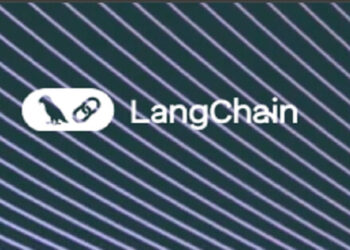Polkadot and Solana are two of the most prominent blockchain protocols. Both offer unique solutions to problems faced by legacy blockchains and their limitations.
Polkadot is a multi-chain protocol that can host multiple Layer1 blockchains, allowing them to communicate and leverage shared security. On the other hand, Solana is designed to address long-standing problems such as transaction speeds and escalating transaction costs.
Polkadot vs. Solana: What Is Polkadot?
Polkadot connects multiple blockchains, enabling the transfer of data or value across incompatible networks and allowing different blockchains to work together. It can do this thanks to a novel feature called parachains. Polkadot’s primary goal is to facilitate communication and the sharing of resources in a secure environment, and it has established itself as one of the most successful projects currently working to power and improve decentralized applications (dApps).
Thanks to its unique architecture, Polkadot can remove barriers between different blockchain networks, allowing previously siloed ecosystems to communicate with one another without needing intermediaries. This is all made possible through parachains, which are specialized blockchains. These parachains have their own functionality and tokens, allowing them to function independently.
Polkadot uses a variation of the Proof-of-Stake consensus mechanism called the Nominated Proof-of-Stake to nominate network validators. Its native token, DOT, acts as a governance token, allowing holders to participate in governance and have a say in the network’s future. Token holders can also stake their tokens to ensure the integrity of the network and receive rewards in return.
Polkadot vs. Solana: What Is Solana?
Called the Ethereum killer, Solana was created to provide a high level of scalability and developer flexibility. It leverages several breakthrough technologies to power a new, permissionless, and highly scalable Layer1 blockchain. Solana Labs built the blockchain, while the open-source project is run by the Solana Foundation. Solana’s primary goal is to significantly scale throughput far beyond what other blockchain protocols are capable of while keeping costs significantly lower.
Solana achieves this impressive feat by utilizing a hybrid consensus mechanism that combines a unique Proof-of-History algorithm with a lightning-fast synchronization engine. This allows the protocol to theoretically achieve an upper bound of 710,000 transactions per second. Currently, Solana processes around 65,000 transactions per second. It also supports dApps, smart contracts, DeFi platforms, and NFT marketplaces. The protocol attracted immediate attention due to its high throughput and the involvement of developers such as Greg Fitzgerald and Eric Williams.
However, Solana has faced significant outages, with some lasting well over 8 hours. These outages were caused by bots looking to swoop up arbitrage opportunities and earn returns from leveraged positions. Despite these outages, Solana remains popular with developers and users alike.
How Do Polkadot And Solana Work?
Let’s understand how each protocol works, starting with Polkadot. Polkadot uses a hybrid consensus mechanism and two sub-protocols, BABE (Blind Assignment for Blockchain Extension) and GRANDPA (GHOST-based Recursive Ancestor Deriving Prefix Agreement). BABE uses VRF to assign slots to validators, guaranteeing that each slot has an author. On the other hand, GRANDPA allows Polkadot to pool network security.
The Relay Chain is the main chain in the Polkadot ecosystem. Collators based on parachains are responsible for constructing and proposing blocks to validators based on the Relay Chain. Once a block is submitted, validators perform a series of availability and validity checks before committing them to the main chain.
Solana’s Proof-of-Stake consensus mechanism is at the heart of the network and is reinforced by another mechanism called “Tower Consensus.” This is derived from the Practical Byzantine Fault Tolerance (PBFT) system, which allows Solana to implement a global source of time across its blockchain via a novel mechanism called Proof-of-History. This gives Solana a precise sequence of events on the blockchain and helps it maintain a record of key events for future reference. Tower Consensus significantly reduces the processing power required, allowing Solana to achieve substantially higher throughput than its competition.
Polkadot vs. Solana: Advantages And Disadvantages
Polkadot offers several advantages over legacy networks, such as improved scalability, interoperability between previously incompatible networks, greater flexibility, security, innovation, and a high degree of decentralization. However, its high level of complexity could act as a disadvantage.
Solana, on the other hand, offers incredible speeds, high scalability, security, and flexibility. However, some disadvantages cannot be overlooked, such as the risk of centralization, limited decentralization, security risks, and the protocol’s high dependency on Solana Labs.
Disclaimer: This article is provided for informational purposes only. It is not offered or intended to be used as legal, tax, investment, financial, or other advice.
Credit: Source link












































